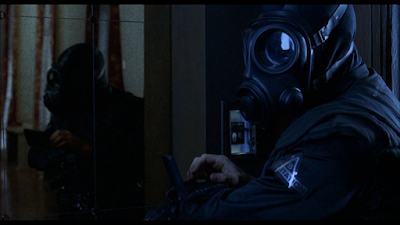Last week saw a couple of parcels drop through the letter box as well as the latest issue of Archive magazine. Alongside those, the tail end of the week also saw a noteworthy news announcement from Evercade and the Wakefield Show for fans of RISC OS took place on Saturday.
Evercade Cartridges and new hardware announcement
The new cartridges first and we have No.15: Jaleco Collection 1 and No.16: Piko Collection 2. Containing 10 and 13 games respectively, there are nice additions to the range and cover 8, 16 and 32-bit software releases. My current favourites in the Jaleco Collection 1 are Earth Defense Force and Bases Loaded, whilst in the Piko Collection 2, Top Race 2 and Soccer Kid have seen the most play time so far. There was a nice mini-poster included in the former collection and some stickers in the latter. I have more carts on order: No.17: Indie Heroes Collection and No18: Worms Collection 1 (both due by the end of May), and there are even more releases due out later in the year: Codemasters Collection, Mega Cat Studios Collection 2 and the Intellivision Collection. According to their own 2021 timeline, Evercade have five more releases due for announcement before the end of the year, so it would be fair to say that they are doing well with the handheld. But that is not all...
On the 23rd of April, Evercade announced the Evercade VS, a mini-console that plugs into your TV via HDMI, has four controller ports and accepts two carts at a time. Funky feature, that one, but it does mean you can have up to 40 titles ready to play without touching the base unit. Following the NES in its styling (that flip up cover is a nice touch), you can also connect other USB controllers as well as wireless dongles to give further controller options. With built-in Wifi for over the air updates and including a controller with a 3m cable, it looks like they have pretty much thought of everything with this addition to the Evercade range. Pricing isn't bad either, £89.99 ($99.99/€99.99) will get you the base machine, though from what I have read, you don't get a power brick or an HDMI cable in the box. Then again, it's not uncommon to have spare cables lying around and to be honest, the last thing my house needs is yet another micro-USB cable and power adaptor. The base pack will get you one cart collection in the box, though they have not announced which one yet and I sincerely hope it's a new release. That way, existing Evercade users won't be duplicating carts if they buy a VS, and if they don't go for the new console, they will still be able to buy the cart separately. One slight issue at the moment is that neither Namco Collections (No.2 and 6) will work with the VS due to licensing issues. That may, however, be sorted by the time the console launches.
As it stands, this is a maybe purchase for me. The price is cheap enough and the Evercade handheld gets a fair bit of use as it is. Ironically, the multiplayer part of the equation isn't the key selling point for me, though I am sure my good lady will kick my backside in quite a few of the titles supporting multiplayer. No, the biggest draw here is the easy connection to a big screen, something that is possible using the handheld but never feels quite right. If I do order this one, it's going to be a busy couple of months later this year, as hopefully I'll receive my Intellivision Amico in early October. Whilst I know that's been getting some stick for delays, the level of communication from the company has never let up, which is promising. It's certainly better than silence as that always puts me off a product that is vying for my pennies and something that has veered me away from supporting the now-released (but not exactly storming it) Atari VCS. That being said, buying one of those if you live in the UK seems nigh on impossible at the moment and that $399 price point is more than a tad off-putting.
Archive Magazine and the Wakefield Show
Archive magazine 25.3 landed on Saturday and it was quite timely, watching as I was the livestream from the virtual Wakefield Show on YouTube. The latest issue is another packed edition and I particularly liked the final part of the ARMs and Architecture series (focusing on memory) and the now semi-regular column Acorn Retro by Colin Piggot of SAM Revival magazine fame. Incidentally, I have pre-ordered issue 26 of SAM Revival which appears to be getting closer to release. As for Archive mag, some interesting figures were released by Gavin over the weekend: a print run of 500 copies and subscribers in 18 countries. That's bloody impressive! The quality demonstrated in the latest issue bodes well for the future.
On to the Wakefield show and I've had thoughts about visiting this for a couple of years now. Due to COVID, this hasn't happened yet and this was the second year where the show was held virtually via an invite-only Zoom meeting and live streams via YouTube and Facebook. You can check out the Wakefield Show website here for the links to the streams. I dipped in and out of the YouTube feed throughout the day and quite enjoyed the updates provided by the various companies attending.
On the whole, this was informative and worth watching, with plenty of new products and updates to existing hardware and software demonstrating that there is still very much an active community around the OS. AMCOG Games started the show and displayed a range of games for RISC OS. The new range of Pi4-based desktops from RISCOSbits and the existing 4te from R-Comp looked quite tasty, as did the updated Ro from CJE Micros. What is interesting to see is that both R-Comp and RISCOSbits now include a hefty amount of pack-in software. Anything to help the new user in getting some benefit out of their new purchase is always good. There was even a half hour from Cloverleaf about their second attempt at a Kickstater campaign... which although it is stated on the Wakefield Show website that the campaign would have started by the time of the 30 minute presentation was due, as at the time of posting this (six days later), it still hasn't launched. I am feeling more ambivalent about this as time goes on. Still, I'll be giving their offering a gander when it's launched. From the presentation last Saturday, there appears to be more focus and detail on what the funding is to go towards and the idea of a €499 RISC OS laptop is tempting.
All in all, this was a positive show. Some good hardware plans, plenty of software to suit a variety of needs and a very forward looking approach to the future of the OS (it is reassuring to see that there is serious discussion abound as to how to deal with the changes to the ARM architecture). What can be taken away from the Wakefield Show is a sense of optimism and, more importantly, realism. The platform is alive and well, there are plans to try and expand the userbase and there is evidence of further international interest in the platform. These are all good things and, as I have said before, give RISC OS a go, you might like it. Just remember its limitations, manage your expectations and you may find something you'll like.



























